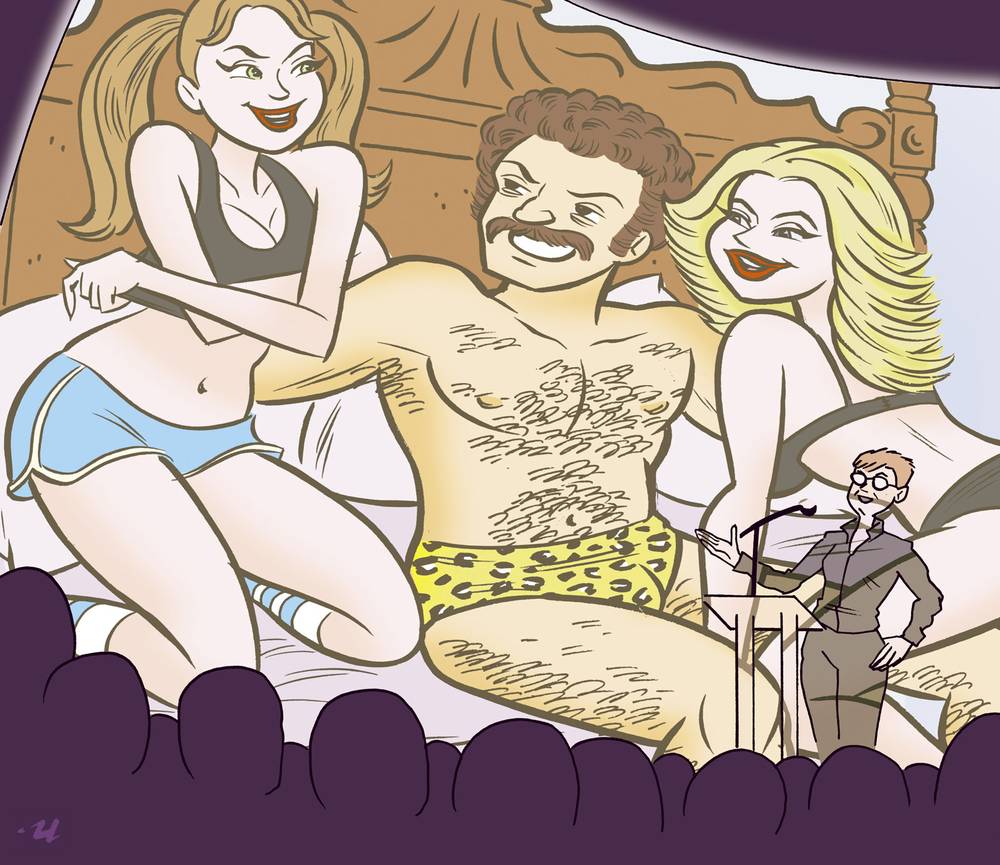The Details
- Defending Pornography as Art and Pop Culture: A talk by Professor Constance Penley
- November 15, 7:30 p.m., UNLV’s Marjorie Barrick Museum Auditorium
In 1998, Rolling Stone magazine named Constance Penley among the top eight most dangerous minds in America for her controversial class on the history of pornography at the University of California, Santa Barbara. A prominent film and media scholar, Penley will give a public lecture at UNLV next week, where she’ll discuss her role as an expert witness at the 2010 federal obscenity trial of adult filmmaker John Stagliano. I recently chatted with Penley about porn, feminism and sex education.
Why a class on pornography? Back in the early ’90s our undergraduate curriculum in media and film at UC Santa Barbara had been lauded as one of the best in the country. We were praised for our breadth and depth across authors, national cinemas, history, theory and genres. I said to my colleagues back in 1993, “We are supposed to be the best, but we are not teaching the most enduring and prolific of genres: pornography.” They said, “You’re right. If we want to be the best we need to teach that.”
But my real inspiration came from work I did with and on slash fans, underground women writers who take two male characters from television shows—at first it was Kirk and Spock—and put them together in these homoerotic, pornographic romances. These women were writing porn for other women. They were also making art and videos. They were doing mashups before we had the word mashup. I felt there was a great deal that media scholars could learn from these women. But what really struck me was that none of them thought of themselves as feminists—despite the fact that based on their writing practices, and their lives, they looked like equality and justice feminists. It became clear to me—and this was the mid-to-late 1980s—that the popular perception of feminism was that it was one and the same with the anti-pornography movement. Slash fans couldn’t accept feminism, because it meant anti-porn, which meant anti-sex and anti-men, and they loved all these things.
So I thought, you know, if I teach a class on porn, it would get a lot of attention. And it did. I wanted a different image of a feminist out there circulating, one who was pro-sex and anti-censorship. If I am a fan of anything, I am a fan of feminism, and I want it to be popular, so teaching porn was my attempt to make feminism more popular.
Porn as a topic of serious inquiry might strike some people as odd. How do you approach it? I teach it as a course on film and popular culture. For the most part, students who take the class are advanced film and media majors, so I want them to be able to ask of pornographic film and media all the questions they normally ask of all other forms of film. How have the style, strategies and content changed over the decades? What have been the audiences and venues? What have been the modes of production, consumption and distribution? How has the legal climate in any given era shaped all of that? Exactly the kinds of things they’d ask of Hollywood filmmaking or any kind of filmmaking. What I want my students to do is something that not many people can do. As a society, we debate, legislate, regulate pornography in almost a total vacuum of knowledge about what it really consists of historically, textually, institutionally. I tell my students that they can have their opinions, but only after they know what pornography is.
Give me an example of a surprise twist your class has taken over the years. I didn’t set out to teach this as a course about feminism and sexuality; I set out to teach it as a film history course. But here’s what happened: My film class, taught by me, the film professor, turned into a big sex education class. It turned into a sex education class, first of all, because of the horrible state of sex education in this country. In one of my first classes, I remember sitting next to one of my students, and it was the first scene of anal sex we had seen in the class. She whispered to herself, “I didn’t know you could do that.” I was delighted when the sex and relationship peer education counselors at my university wanted seats reserved for them in the class. And then, increasingly, so many of the feminists who work in porn are, or have become, sex educators. [Sex educator/former porn star] Annie Sprinkle once asked what kind of sex education my students got in school. I said, “I don’t know. Ask them.” It ranged from abstinence-only to fairly decent middle school sex education to the nun passing the fetus in a jar around the classroom. Through my guest lecturers, my class has come to understand this whole sex geek, porn geek and radical sex education world. And that’s how my film history class got hijacked as a sex education class, and how this film scholar got inadvertently turned into a sex educator.
Lynn Comella is a Women’s Studies professor at UNLV.

Previous Discussion: